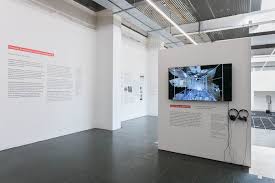Interdisciplinary, multidisciplinary, mixed-media OR single (mono) disciplinary?
- Carol Anne Jones

- Oct 14, 2018
- 2 min read
Updated: Aug 24, 2020
In the West, the cultural world awards season is coming up and in contemporary visual art the winner of the 34th edition Turner Prize 2018 (named after J. M. W. Turner the English painter) will be announced in December at an awards ceremony live on the TV.
So who’s in the determining jury this year? Well the jury is;
Oliver Basciano, art critic and International Editor at ArtReview
Elena Filipovic, Director, Kunsthalle Basel
Lisa LeFeuvre, Head of Sculpture Studies, Henry Moore Institute
And finally…
Tom McCarthy, novelist and writer.
Of course the award will fulfill its promise to promote public debate around new developments in contemporary art and it will go to a British artist (living or working in the UK) for an outstanding exhibition or public presentation of their work anywhere in the world in the previous year.
What's good this year is that prior to 2016, only artists under the age of 50 were eligible BUT this year (and I’m glad to hear, since I know there’s a lot of plus 50 artists out there working!) this restriction has been removed for the 2018 award.
There’s an exhibition of work of the shortlisted artists at Tate Britain from now to 6 January 2019.
So who are the 4 chosen ones, tackling pressing issues in today’s society?
Forensic Architecture - an interdisciplinary team that includes architects, filmmakers, lawyers and scientists (MACBA Barcelona and MUAC Mexico). The jury praised Forensic Architecture for developing highly innovative methods for sourcing and visualising evidence relating to human rights abuses around the world, used in courts of law as well as exhibitions of art and architecture.
Naeem Mohaiemen - his practice investigates transnational left politics in the period after the Second World War, the legacies of decolonisation and the erasing and rewriting of memories of political utopias. The jury was struck by the way Mohaiemen’s films explore post-colonial identity, migration, exile and refuge through narratives using fiction and social history that combine the traumas of history with his own family stories in his films, installations, and essays.
Charlotte Prodger whose works build a complex narrative using moving image, sculpture, writing and performance. Her work explores issues surrounding queer identity, landscape, language technology and time.
Luke Willis Thompson for his solo exhibition Autoportrait at Chisenhale, London. The jury particularly noted the way the artist addresses representations of race and police violence. Working in film and performance he investigates the treatment of minority communities and the way objects, places and people can be imbued with violence. His works tackle traumatic histories of class, racial and social inequality, institutional violence, colonialism and forced migration.
So to us the audience, instead of asking, "do I like how this looks?" ask, "do I like the idea that this artist presents?"
Then ask, is the artist interdisciplinary, multidisciplinary, mixed-media or single (mono) disciplinary?
I’d love to see the interdisciplinary team of “Forensic Architecture”‘ take the prize.
Inter’ means ‘together’ or ‘mutual’ and in other words, varied disciplines working together mutually, that is a skilled philosophy or knowledge from several fields working together to solve problems that are outside the scope of the traditional boundaries.
We will see in December!










Comments